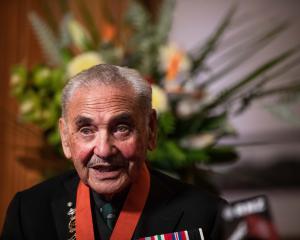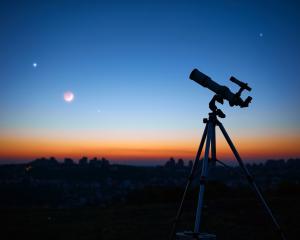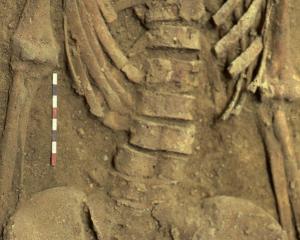The canonisation of Sister Mary MacKillop this weekend is the latest chapter in a long history of saints, writes Shane Gilchrist.
Faith, service and celebration are key components in the concept of sainthood, although the list of requirements can include sacrifice, even death.
Tim Cooper, a senior lecturer in the history of Christianity at the University of Otago, says in the first three centuries of Christianity, followers of the religion were persecuted in the Roman Empire.
"There were martyrs who died for their faith and their deaths were remembered and celebrated by later Christians."
Quoting an early Christian apologist - "the blood of the martyrs is the seed of the Church" - Dr Cooper says persecution, far from curbing Christianity, actually made it grow.
"After the fourth century, when Constantine [a Christian] became emperor, Christianity was no longer persecuted.
"That led to greater veneration of these martyrs because the possibility of martyrdom had been taken away.
"The dates of their martyrdom became their birth dates, in the sense of going on to eternal life.
"Those saints' days just kept accumulating through the next two centuries to the point where you couldn't go a day without a saint - even two or three - being venerated.
"It was one of the things that eventually had to be sorted out by the Church in the West, which happened under Charlemagne in the late eighth century.
"You couldn't have every man and his dog being made a saint.
"It was about tightening up procedures so there was some order, or selection, to it."
By this time, sainthood was a popular concept.
One of the reasons, Dr Cooper says, was because God was seen to be distant, "like a feudal lord whom you didn't approach".
Thus if you sought to connect with God, it was regarded as beneficial to have an advocate, someone well-placed in heaven who would make the approach on your behalf.
"Jesus was the ultimate mediator; Mary was next because she was the mother of Christ; then you had the saints, who were closer to us. They were notable figures," Dr Cooper explains.
"At this time, you had the barbarian invasions. Europe was very vulnerable and you had bishops from the Church trying to protect people.
"There are lots of stories of bishops [some of whom were made saints] negotiating with the barbarians, making deals, imploring.
"There is this sense that after their death, they have some sort of power, as do their relics and the sites at which they ministered. That's where pilgrimages come into the story - where people visit the site of a saint in an effort to come closer and gain the power that the saint has."
Dr Cooper says there are, roughly, about 10,000 saints celebrated by Catholic and Orthodox churches, but not by Protestants.
"One of the things dismissed at the Protestant Reformation in the 16th century was the veneration of saints."
There were several reasons, including sainthood being deemed to be superstitious; it was also regarded as "un-Biblical".
"They wanted to equalise everyone in a shared human condition, whereas the concept of sainthood was based on the idea that some people are better than others and should be lifted up."
And the difference between angels and saints?
Dr Cooper says there is an element of confusion in distinguishing the groups.
"They seem to operate in the same way, except that angels are unknown as individuals; they are a generic group who somehow minister and serve unseen among us.
"The saints are more localised and personalised; they are more human. But they are in a similar category in some ways, in that they have power."












